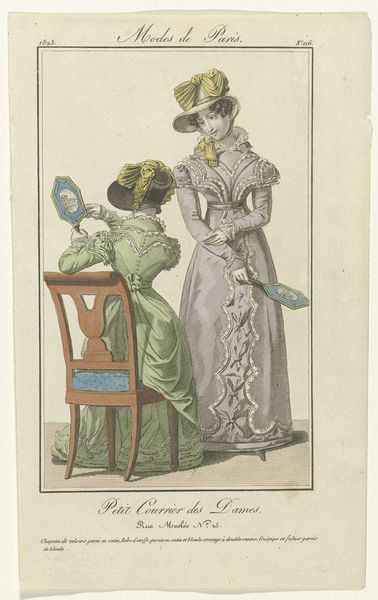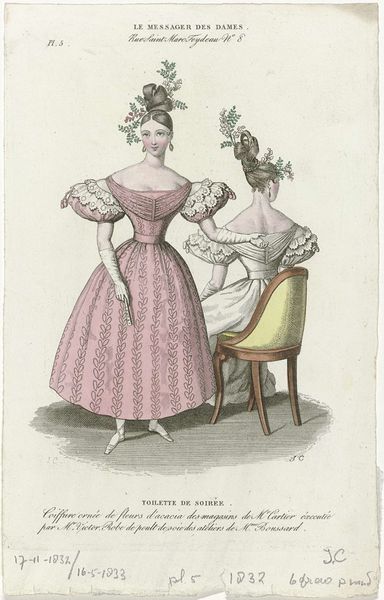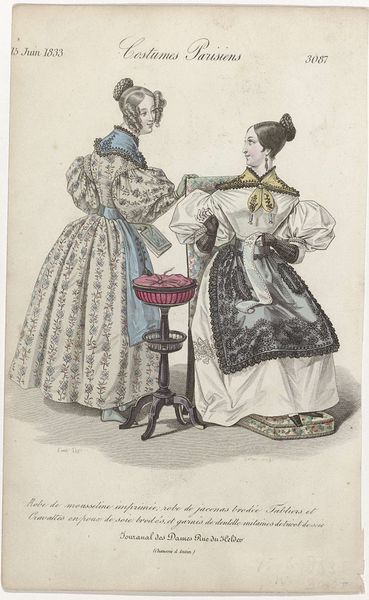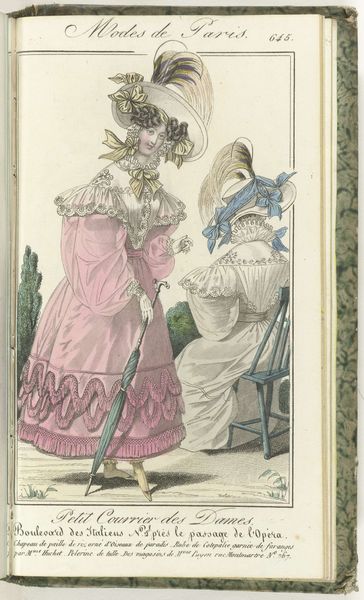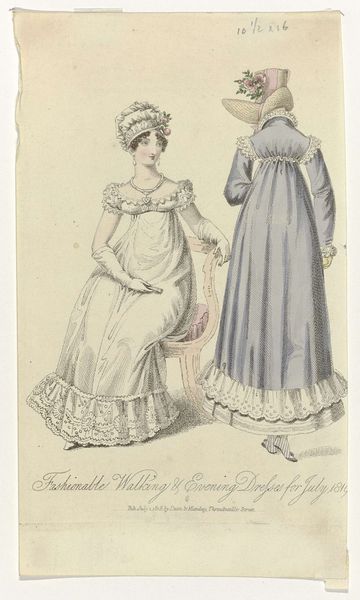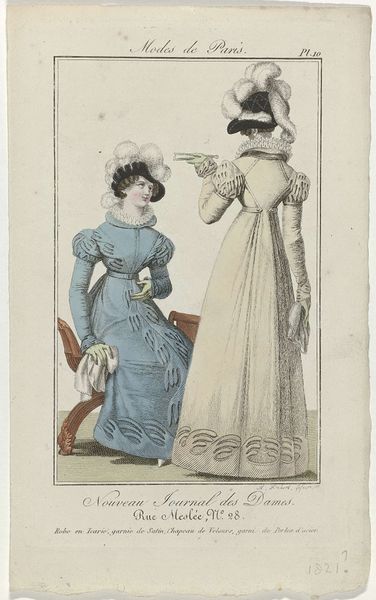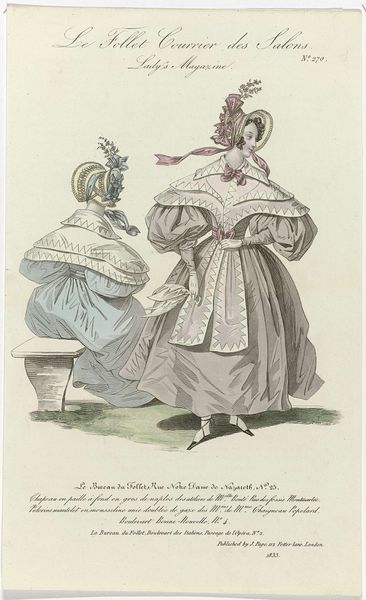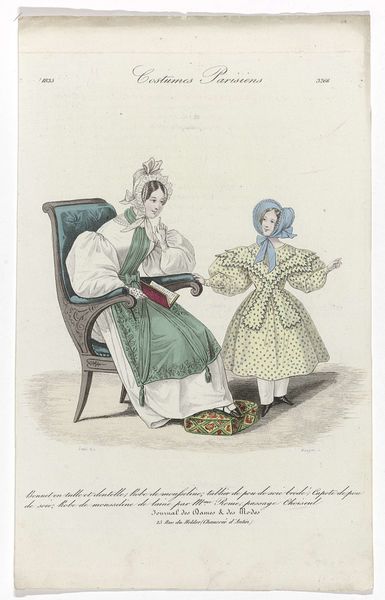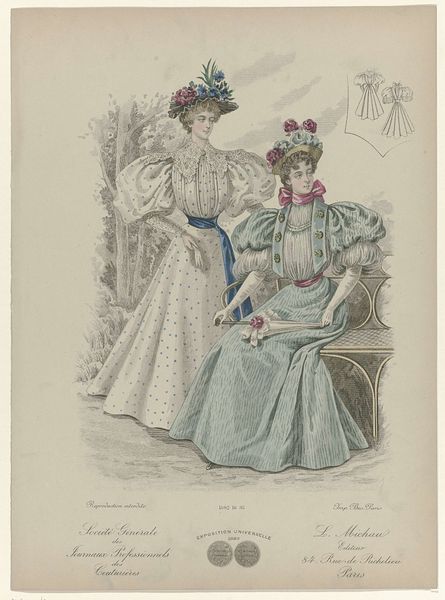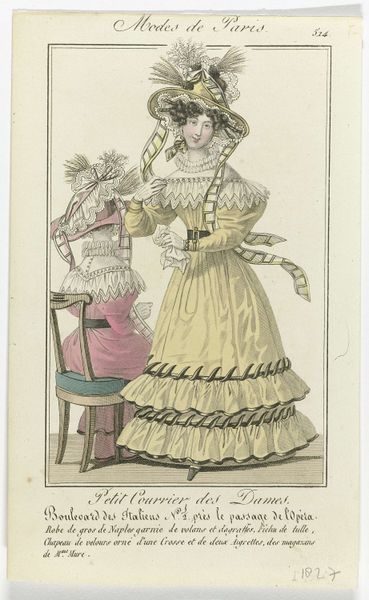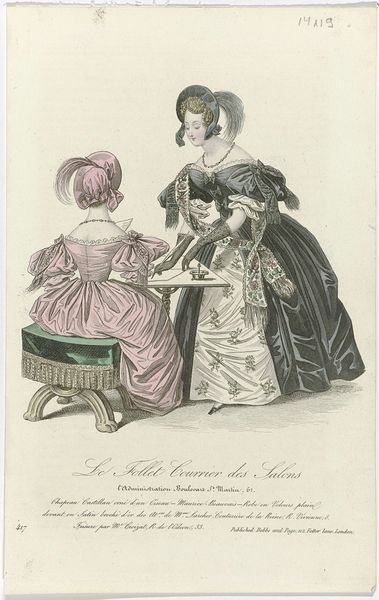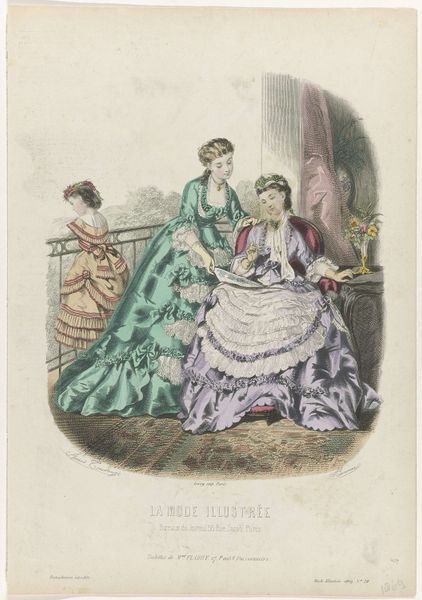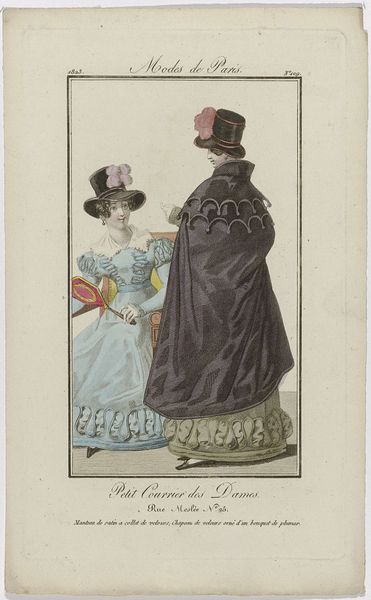
#
portrait
# print
#
genre-painting
#
dress
Dimensions: height 230 mm, width 142 mm
Copyright: Rijks Museum: Open Domain
Editor: This is "La Mode, 1831, Pl. 112: Toilette et négligé du matin," a print by Jean-Denis Nargeot from 1831. It features two women, one standing and one seated at a table. The details in their dresses are quite striking. What do you make of this image? Curator: Well, immediately I’m drawn to the lithographic process itself. Look at how the image relies on the transfer of grease from the printing stone. This speaks volumes about the industrialization of fashion and image-making in the 19th century. Are we really seeing representations of aristocratic women, or are we witnessing the commodification of their style for mass consumption? Editor: That's interesting. I was focused on the clothes, but you're talking about how the image *itself* is a commodity. So, what does that tell us about the intended audience? Curator: Precisely! These aren’t just pretty pictures. They are blueprints, or perhaps manuals, for the aspirational middle classes on how to perform "femininity," but fabricated through specific materials and techniques of mass reproduction. Consider how the "high art" of portraiture is being democratized and, some would say, degraded through this technology. Is this artwork reflecting or constructing new forms of social identity? Editor: So the print itself participates in the fashion it depicts by making style accessible through a more reproducible and cost-effective medium? Curator: Absolutely. The lines are deliberately blurred. "La Mode" wasn't simply *reflecting* what aristocratic women wore; it was constructing and disseminating aspirational visual ideals for the rising bourgeoisie and, through cheaper printed images, affecting consumption habits, labour patterns in textiles, and the very construction of social distinctions. How do we reconcile notions of beauty with this production? Editor: I never thought about a fashion plate as an industrial object before! It’s made me consider its cultural impact from an entirely new angle. Curator: Indeed! It's essential to analyze art objects regarding their process, materiality, and consumption. It invites further consideration on the work conditions associated with textiles in that era.
Comments
No comments
Be the first to comment and join the conversation on the ultimate creative platform.
